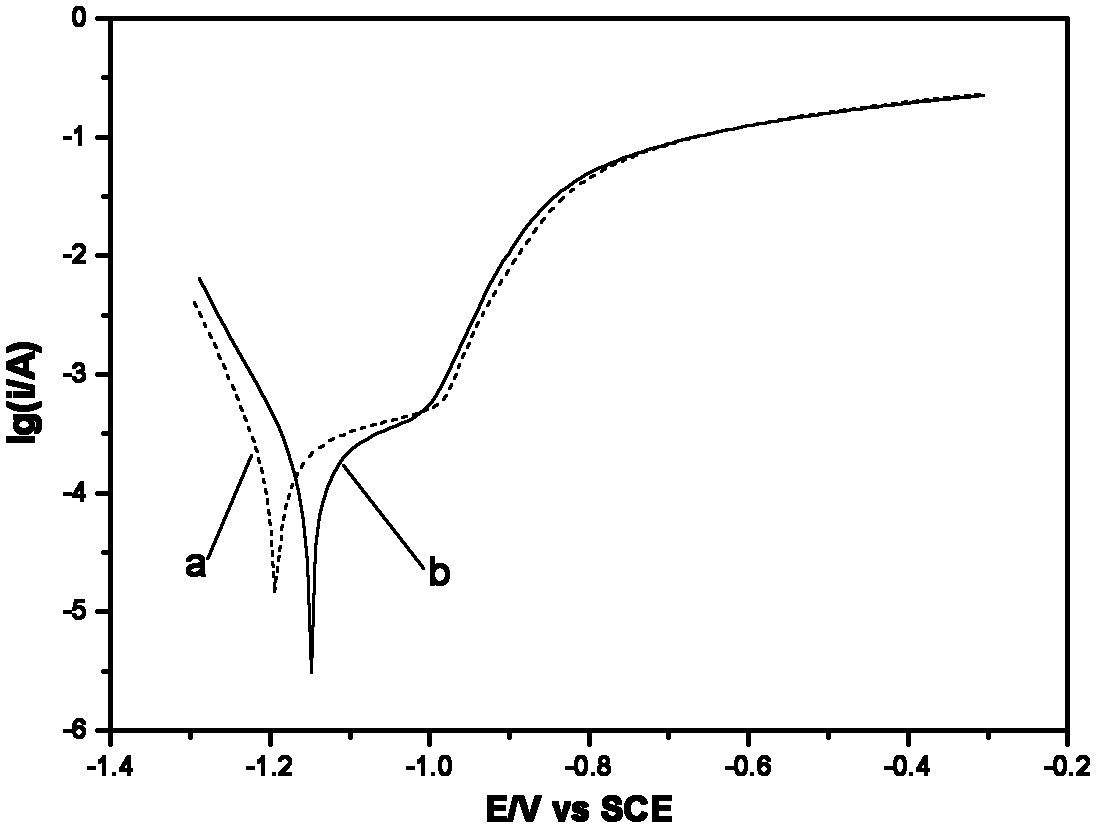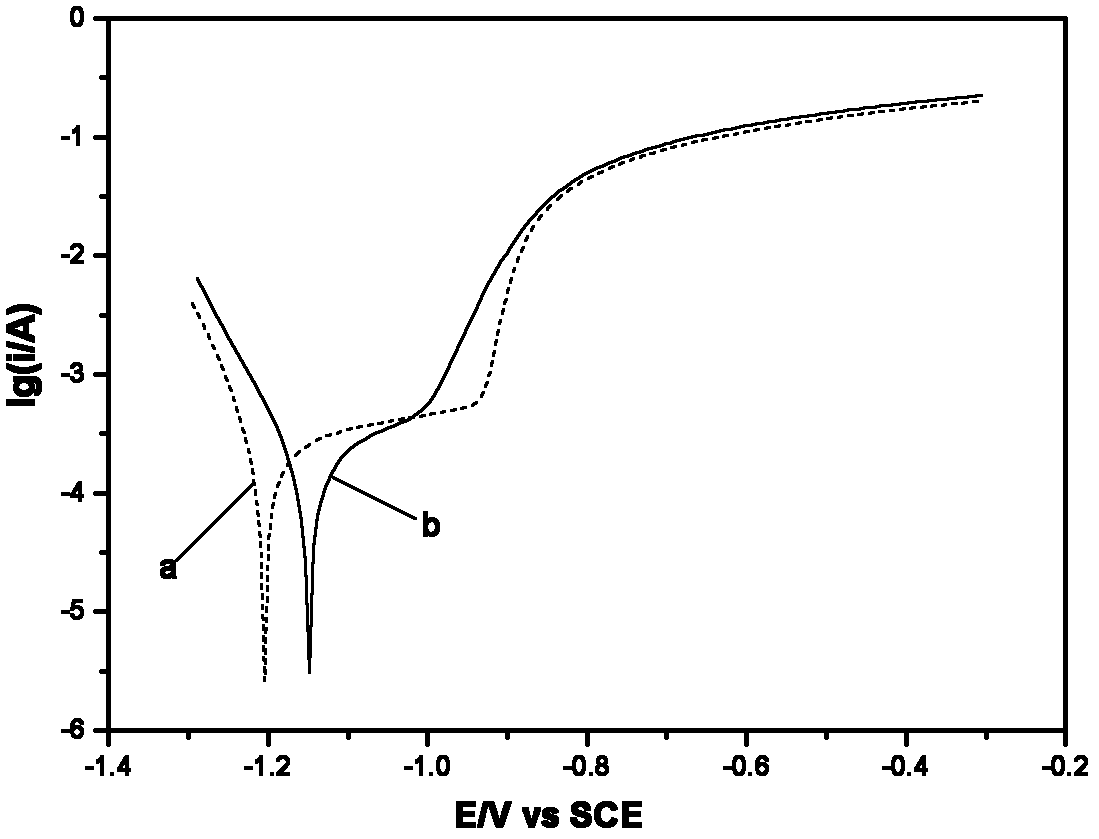Additive for chloride zincification and preparation method and application thereof
A technology of chlorides and additives, which is applied in the field of additives and preparations of chloride galvanizing process, which can solve the problems affecting the quality of coatings and waste water treatment, and achieve the effects of reducing foam generation, easy biodegradation, and simple operation
- Summary
- Abstract
- Description
- Claims
- Application Information
AI Technical Summary
Problems solved by technology
Method used
Image
Examples
Embodiment 1
[0035] (1) Weigh 100g of octylphenol polyoxyethylene ether into the reactor, raise the temperature to 50°C while stirring, and then slowly add 25g of phosphorus pentoxide within 1.5h. Stirring was stopped, and after the feeding was completed, the temperature was rapidly raised to 90°C to carry out the esterification reaction, and the reaction was stopped after 3 hours to obtain 125 g of condensate.
[0036] (2) Add deionized water equal to the condensate to the condensate, then adjust to neutrality with 5mol / L KOH solution, then cool naturally to room temperature, then add 100g of composite surfactant (polyethylene glycol) to the condensate Diol 800 and sodium lauryl sulfate in a mass ratio of 3:1), heated to 50° C. to completely dissolve the composite surfactant, and then naturally cooled to room temperature to obtain a mixture.
[0037] (3) 20 g of benzylidene acetone and 200 g of absolute ethanol were mixed to obtain a benzylidene acetone ethanol solution.
[0038] (4) Mix...
Embodiment 2
[0042](1) Weigh 100g of nonylphenol polyoxyethylene ether into the reactor, raise the temperature to 50°C while stirring, then slowly add 20g of phosphoric acid within 1.5h, and keep stirring during the feeding process , after the addition was completed, the temperature was rapidly raised to 90° C. for esterification reaction, and the reaction was stopped after 3 hours to obtain 120 g of condensate.
[0043] (2) Add deionized water equal to the condensate in the condensate, then adjust to neutrality with 5mol / L KOH solution, then cool naturally to room temperature, then add 100g of composite surfactant (polyethylene) to the condensate Ether and sodium lauryl sulfate in a mass ratio of 3:1), heated to 50°C to completely dissolve the complex surfactant, and then naturally cooled to room temperature to obtain a mixture.
[0044] (3) 20 g of benzylidene acetone and 200 g of absolute ethanol were mixed to obtain a benzylidene acetone ethanol solution.
[0045] (4) Mix the mixture ...
Embodiment 3
[0049] (1) Weigh 100g of octylphenol polyoxyethylene ether and add it to the reactor, raise the temperature to 50°C while stirring, and then slowly add 25g of phosphorus trichloride within 1.5h. Stirring was stopped, and after the feeding was completed, the temperature was rapidly raised to 90°C to carry out the esterification reaction, and the reaction was stopped after 3 hours to obtain 125 g of condensate.
[0050] (2) Add deionized water equal to that of the condensate to the condensate, then use 5 mol / L KOH solution to adjust to neutrality, and then naturally cool to room temperature to obtain the condensate. Then add 100g of composite surfactant (polyvinyl ether and sodium lauryl sulfate in a mass ratio of 3:1 ratio) to the condensate, heat to 50°C to completely dissolve the composite surfactant, and then naturally cool to room temperature , to obtain a mixture.
[0051] (3) 20 g of benzylidene acetone and 200 g of absolute ethanol were mixed to obtain a benzylidene ace...
PUM
| Property | Measurement | Unit |
|---|---|---|
| degree of polymerization | aaaaa | aaaaa |
Abstract
Description
Claims
Application Information
 Login to View More
Login to View More - R&D
- Intellectual Property
- Life Sciences
- Materials
- Tech Scout
- Unparalleled Data Quality
- Higher Quality Content
- 60% Fewer Hallucinations
Browse by: Latest US Patents, China's latest patents, Technical Efficacy Thesaurus, Application Domain, Technology Topic, Popular Technical Reports.
© 2025 PatSnap. All rights reserved.Legal|Privacy policy|Modern Slavery Act Transparency Statement|Sitemap|About US| Contact US: help@patsnap.com



